See the Stunning Winners of the Close-Up Photographer of the Year Awards
![]()
The winners of the second annual Close-Up Photographer of the Year contest were announced recently, showcasing some of the best “close-up, macro & micro photography” from around the globe and inspiring all of us to take a closer look at the tiny worlds that surround us.
More than 6,500 photos from 52 different countries were submitted to the contest this year across a total of 7 categories: Animals, Insects, Plants & Fungi, Intimate Landscape, Manmage World, Micro, and Young Close-Up Photographer of the Year (for photographers under 17 years of age).
The grand prize and title of Close-Up Photographer of the Year went marine molecular ecology professor Galice Hoarau, who submitted the winning entry in the Animals category. His striking photograph of a glowing Eel Larva was captured during a “blackwater dive” (night diving) off the island of Lembeh in Indonesia:
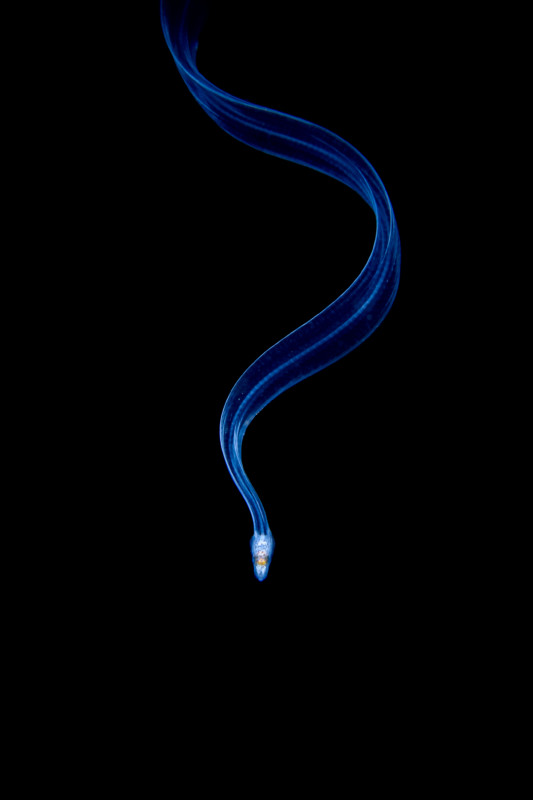
“What makes blackwater diving so magical is the abundance of rarely seen planktonic creatures you spot as they take part in one of the largest daily migrations of any animal on Earth,” explains Hoarau. “After sunset, small pelagic animals (like this larva) rise close to the surface to feed where the sunlight has allowed planktonic algae to grow. At sunrise, they dive into the depths and stay down there during the day to escape predators.”
The photo was captured using an Olympus OM-D E-M1 Mark II and 30mm Macro lens packed inside a Nauticam housing, using two Inon Z-330 strobe and 2 Sola lights. The settings were 1/320s, f/16, and ISO 400.
In addition to bragging rights and the CUPOTY trophy, Hoarau walks away with £2,500 (~$3,250) in prize money for his achievement.
Scroll down to see and learn about the winners for each of the 6 remaining categories, and if you want to see even more stunning close-up, macro, and micro photography you can browse through and marvel at all Top 100 entries on the CUPOTY website:
Winner – Young Close-Up Photographer of the Year
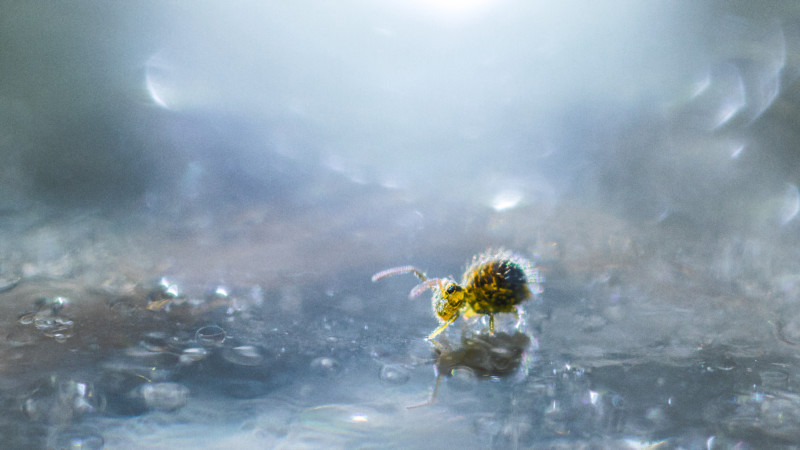
Photographer: Tamás Koncz-Bisztricz
Title: Little Ball
Gear: Canon EOS 7D Mk II and Canon MP-E 65mm Macro
Settings: 1/250sec, f/4.5, ISO 800
Description: I regularly visit a meadow near my hometown of Csongrád-Bokros, Hungary, observing the site in all seasons. The meadow is grazed by Hungarian grey cattle, which keeps the place in relatively good condition. One frosty winter’s morning I headed out to take some extreme macro shots at the surface of some frozen water that had pooled in the tracks left by a tractor. Crouching down, I spotted some yellow globular springtails (Sminthurus maculatus) which feed in the sunrays reflected from the ice. I used LED torches to illuminate one of them, and came away with a picture that celebrates this tiny creature.
Winner – Insects Category
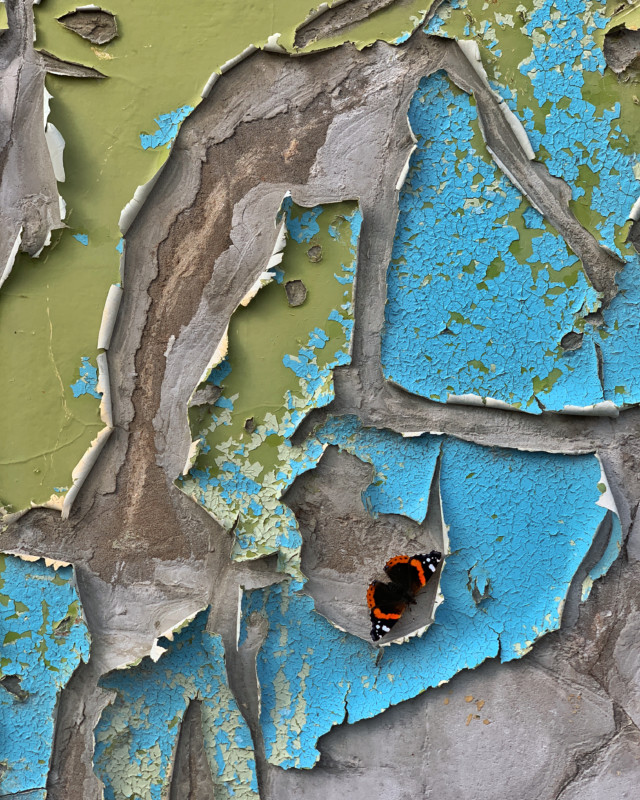
Photographer: Mike Curry
Title: Fragile
Gear: Apple iPhone XS
Settings: 1/705sec, f/2.4, ISO 16
Description: I was visiting Goole, the town where I was born in East Yorkshire, in 2018 as my dad was very ill in hospital. To take my mind off things I went for a walk with my wife Justine. There had been no time to pack really so all I had with me was my iPhone XS.
We were walking towards the docks when I saw some beautiful peeling paint on an abandoned building site. I went over to photograph it when Justine asked if I had noticed the butterfly too. I hadn’t as I was miles away, but I had already captured this image serendipitously. It felt a surreal moment as my dad particularly liked butterflies and always commented that they represented relatives who had passed away, making it even more poignant. Unfortunately he passed away shortly after, so this is a special photograph for me.
Winner – Plants & Fungi
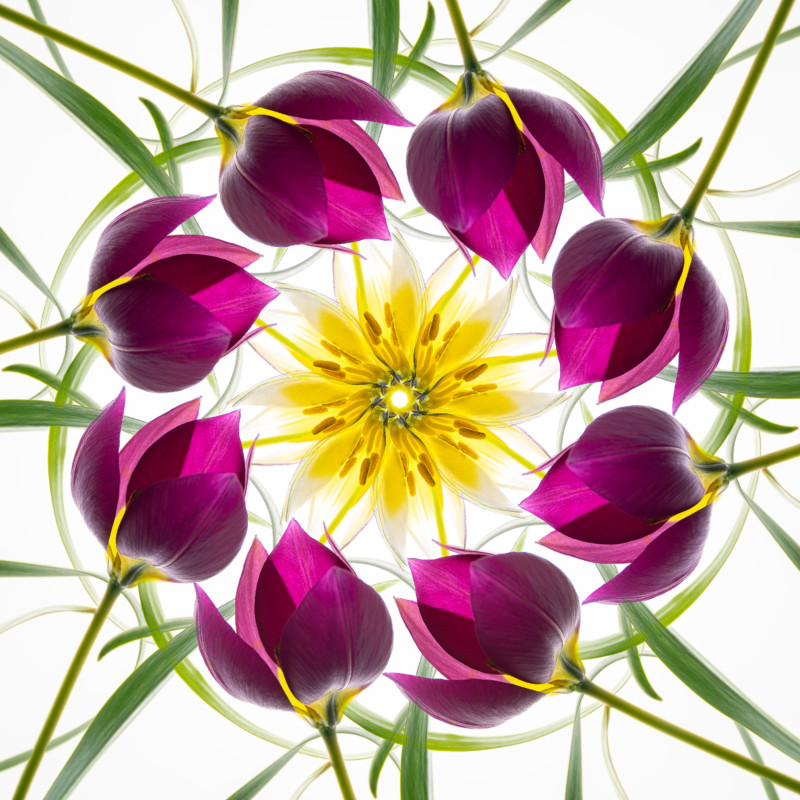
Photographer: Elizabeth Kazda
Title: Mandala with Miniature Tulips
Gear: Nikon D850 and Lensbaby Velvet 85mm
Settings: 1/15sec, f/8, ISO 64
Description: My goal with this photo was to create art that challenges the viewer to look at the natural world with fresh eyes. I collected some miniature tulips from my garden and placed them on a lightbox. The vivid yellow centres were so striking that I decided to create a composition that would show both a side view and a centre view of the plants.
The tulips were photographed and rotated at eight equidistant positions to complete a full rotation; it’s a technique that I call Precise Incremental Rotation. An in-camera multiple exposure of eight frames was used to create the effect. The characteristics of the tulips are really emphasised when rendered within the rotational symmetry of the mandala form. The curved green leaves make a great frame for the flower, while the centre of the design highlights the tulip’s anthers.
Winner – Intimate Landscape
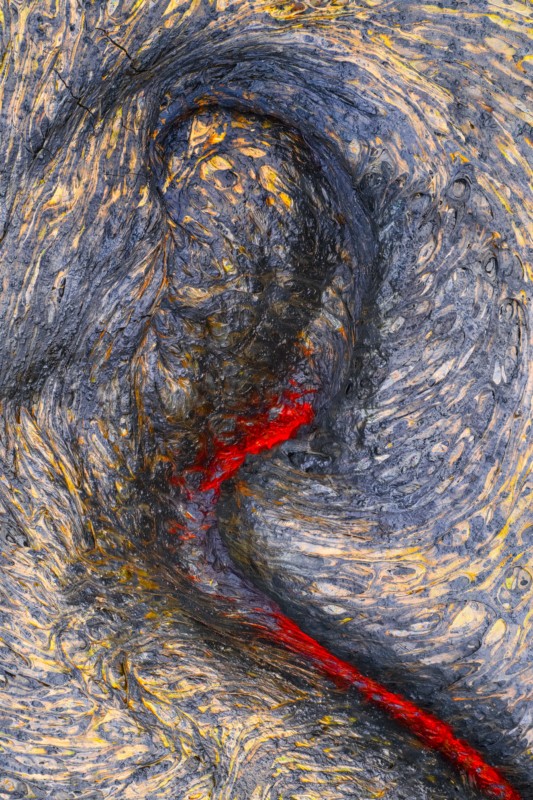
Photographer: Mark James Ford
Title: Cast in Stone
Gear: SIGMA sd Quattro H and SIGMA 180mm Macro
Settings: SFD-Mode (7 exposures combined in camera), f/22, ISO 100
Description: Trekking across the baking lava of the Kalapana lava field in Hawaii, was an experience not to be forgotten. Incredible organic structures of black, blue, gold and bronze seemed to overwhelm the senses, but eventually the increasing presence of sulphur dioxide and other acidic gases, acted as a reminder that I was walking on an erupting volcano. Heat was rising from every crack in the rock, and before my very eyes the rocks would turn orange and suddenly begin to flow. New land, rock and stone was being created just meters away from me.
I had just seconds to capture this image of a lava flow setting into the form it would retain for millions of years. The glass-like rock was still glowing below the surface, but soon enough a new lava flow started centimetres from my feet and I was forced to retreat.
Winner – Manmade World
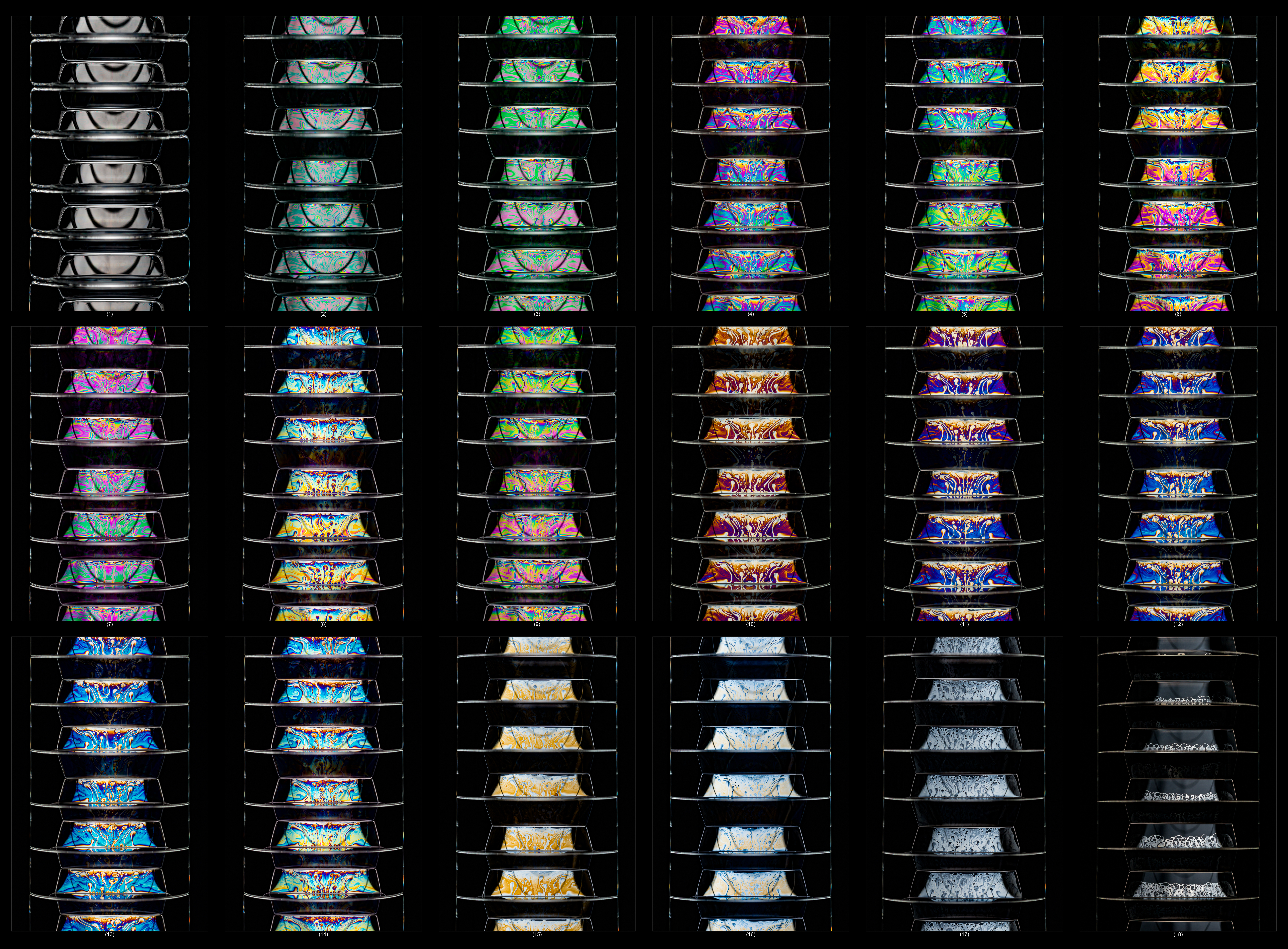
Photographer: Kym Cox
Title: Life Cycle of Soap Bubble Iridescence
Gear: Nikon D800E and Zeiss 100mm Makro Planar
Settings: 1/60sec, f/22, ISO 400
Description: This series of time-lapse photographs shows columns of equally-sized soap bubbles in a glass, cylindrical tube. Each photograph – there are 16 in total here – illustrates light interference colours and patterns responding to directional light.
Swirling patterns of colour are created because bubbles are made of a liquid that continually flows, swirls and drains quickly, and in all directions. Light waves reflect and refract through the bubble walls. Variations in thickness cause variations in colour and intensity. The speed at which colours and patterns change is phenomenal. The light interference cycle only takes a few seconds to complete.
This was photographed in my studio/lab in May 2016 as part of an Art+Science collaboration with Prof. Stefan Hutzler, Leader of the Foams + Complex Systems Group, School of Physics, Trinity College Dublin.
Winner – Micro
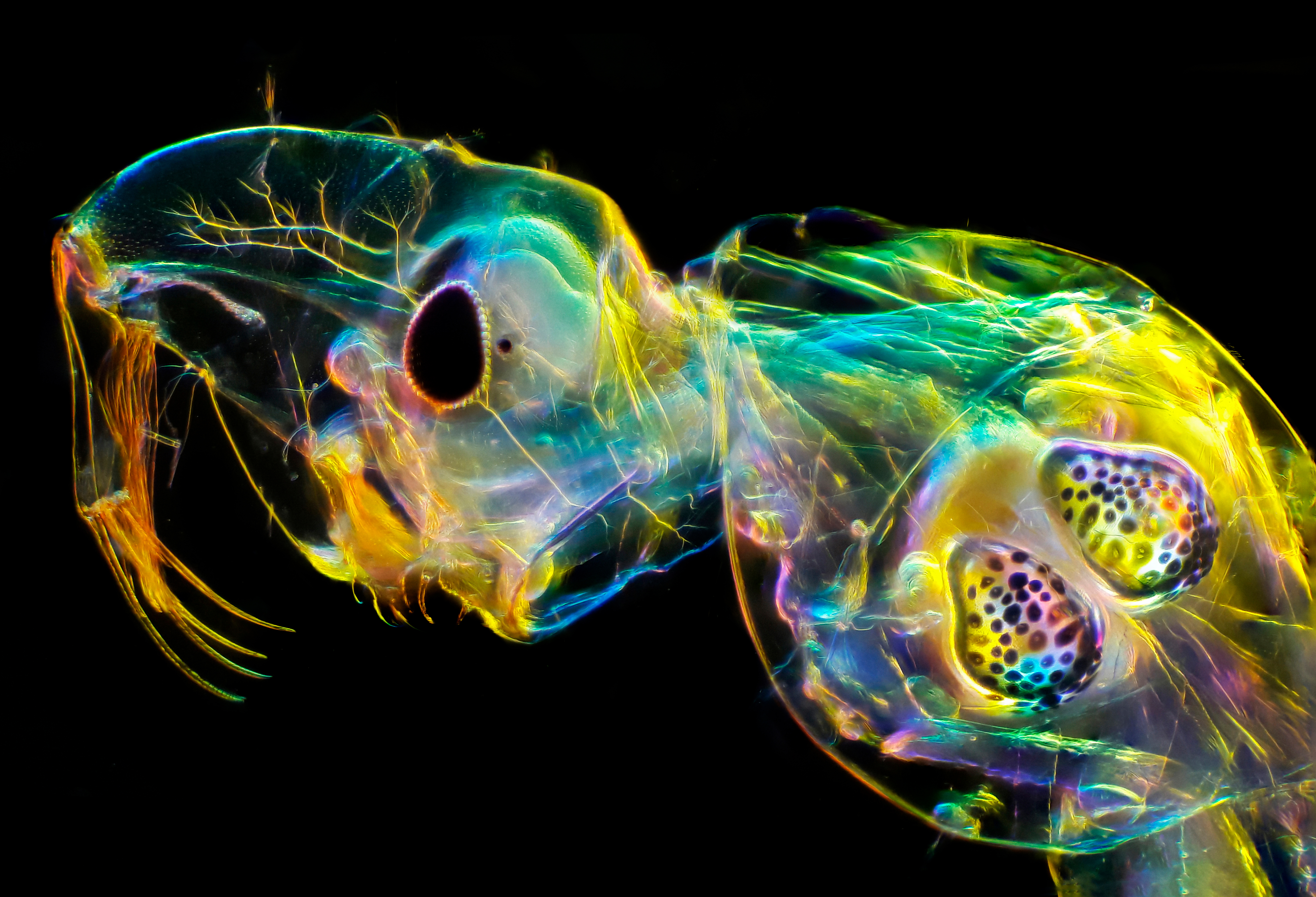
Photographer: Andrei Savitsky
Title: Glass Worm
Gear: Samsung J700 camera and Biolam R-11 microscope
Settings: 8-frame focus-stacked panorama, f/1.9, ISO 100
Description: Glass worms can vary in length from about half an inch to two inches. On the right side of this image you can see the large tracheal bubbles that serve as hydrostatic organs (or swim bladders). These bubbles allow the larva to keep its horizontal position in the water column, while also helping to regulate the depth of its immersion. The bubbles are covered with dark pigment cells that can resize – if the cells expand due to absorption of light, the tracheal bubbles heat up and increase in volume, reducing the weight of the larva and causing it to float up.
To create the picture here I made a panorama of eight frames, each of which was focus stacked. To make the image as detailed (and aesthetically pleasing) as I possible I used darkfield and polarisation techniques.
Image credits: All photos credited individually, used courtesy of the Close-Up Photographer of the Year Awards.